Amazon Echo vs Echo Plus: which Alexa speaker is the one for you?
What makes the Plus... plusier?
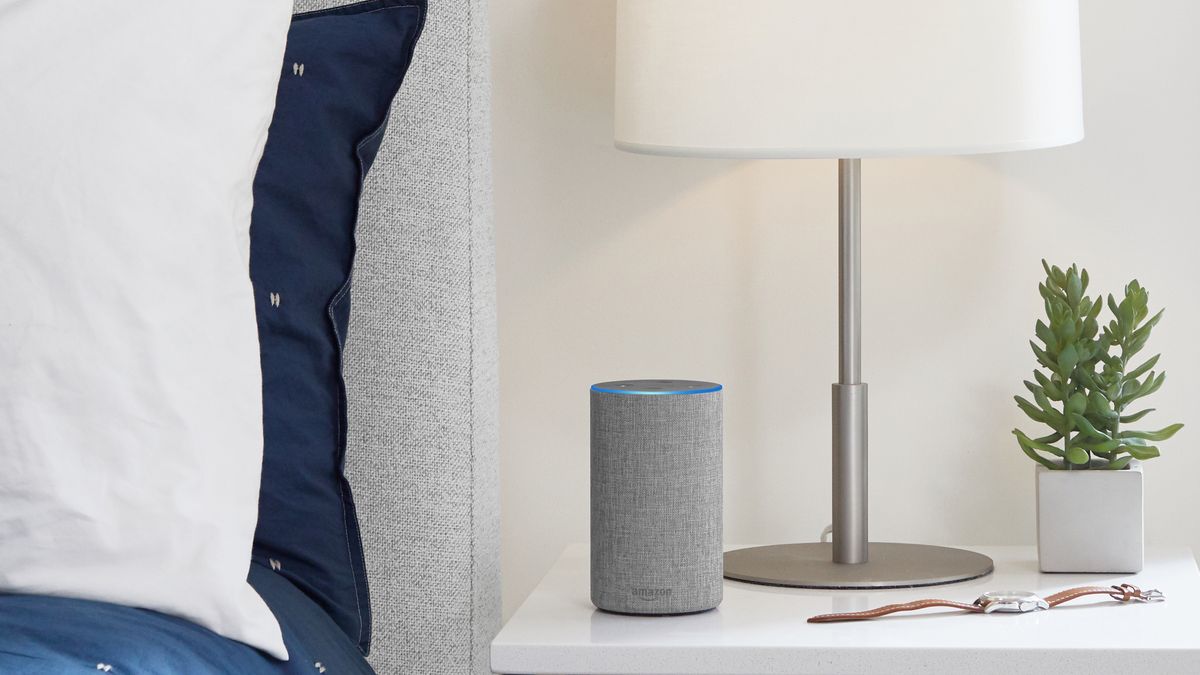
So you’ve decided that you want a smart speaker. You’ve ruled out the Apple HomePod and its sometimes-sketchy Siri voice companion, and have decided Google already knows enough about you before inviting a Google Home Hub into your castle.
That pretty much leaves you with Amazon’s Alexa range or Echo speakers. You want something with a bit more audio oomph than the small Amazon Echo Spot, Echo Dot or forthcoming Amazon Echo Show 5, and find the screen-sporting full-size Echo Show a bit domineering.
What’s left? The Amazon Echo, or the Amazon Echo Plus. They’re the most closely-related of the smart speakers coming out of Amazon’s stable, and understanding the differences between them can make choosing which is for you a surprisingly involved task. Which sounds better? Which is more expensive? What exactly makes the Plus...plusier?
We’re here to help: these are the key differences and benefits of the two core Amazon Echo models.
[Update: The Amazon Echo has been given a huge design overhaul, as announced at Amazon's 2020 event. The all-new Echo range sports a strange, spherical design, and it includes the Echo, Echo Dot, Echo Dot with Clock, and Echo Dot Kids Edition.
There's also a new Echo Show 10 with Netflix support, as well as an upgraded Fire TV Stick.
The Amazon event saw in a huge range of exciting new tech, with everything from flying drones to a new games streaming service called Amazon Luna. Check out our guide to everything that was announced at the Amazon 2020 event for the lowdown on all the new tech.]
Get daily insight, inspiration and deals in your inbox
Sign up for breaking news, reviews, opinion, top tech deals, and more.
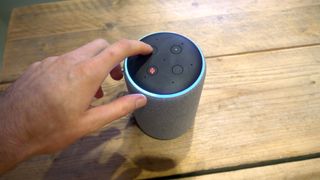
What is an Amazon Echo? And what does Alexa do?
First things first – what exactly do these speakers do? At their heart, both the Amazon Echo and the Amazon Echo Plus are voice-activated, web-connected speakers. By simply talking to the onboard voice assistant, Alexa, you can use your natural spoken voice to get the speaker to do things. Simply say the wake word “Alexa”, which the speakers’ onboard microphones are constantly listening for, and they’re then ready to do your bidding.
They’re incredibly versatile speakers, capable of carrying out many tasks, known here as 'Skills'. Connecting to hundreds of popular services and thousands of smart home products, you can ask Alexa to play any song from your favored streaming service of choice, answer all manner of general knowledge questions, read books and playback podcasts, and control loads of web connected products around your home, from the channels on your TV to the color of your smart light bulbs.
Mileage will vary depending on how much web-connected tech you’ve got dotted around your home, but the Amazon Echo speakers are so simple to use that even tech luddites can have one seamlessly integrate into their lives. Whether it’s asking for a weather report, setting alarms and timers, or noting down calendar reminders, everyone will find these smart speakers useful to some degree or other.
You can now make voice calls to mobile phone numbers in the US, UK, Canada, and Mexico. To enable this feature, you need to assign your mobile number to your Amazon account, giving it access to your contacts book.
You'll then be able to ask "Alexa, call Dad" and have your smart speaker patch you through to her smartphone. The ability to receive calls on Echo devices is limited depending on which mobile network you're on, but anyone is able to make them.
- Best Kindle 2019: which Amazon ereader should you buy?
- Best cheap Amazon Echo prices, deals and sales: bring Alexa home
- Best audiobook sites 2019: easy listening for avid readers
Which looks better, the Echo or Amazon Echo Plus?
At first glance, there’s really not that much to separate the Echo and the Echo Plus, now that’s they’re both a couple of hardware revisions in. Both are broadly cylindrical in shape and 5.8-inches tall, with the Echo Plus being a little plumper at 3.9-inches compared to the Echo’s 3.4-inch girth.
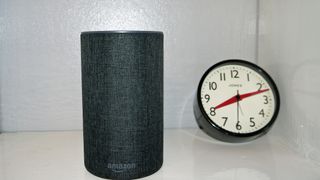
Both have buttons on top for muting the mic, activating Alexa, and changing volume levels, and both have the signature blue light ring around their rims to let you know when Alexa is listening. The only difference is in the finishes – the Plus has three fabric surfaces to pick from (sandstone, charcoal or heather gray), while the regular Echo has those fabric finishes as well as smooth oak, walnut and ‘silver’ options which expose the speaker grilles.
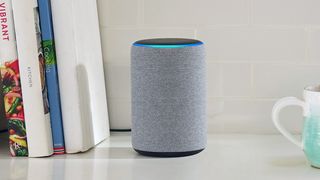
In other words, there’s not a lot separating the two – go for an Echo with a smooth finish if you want a more industrial look, otherwise it’s just a choice of shades. Previous versions of the Plus were taller and slimmer, with a physical dial to control the volume, but these are now long discontinued.
What features are different with Echo and Echo Plus?
So, see those things up above that we said the Echo speakers can do? All that will work across both Amazon Echo and Amazon Echo Plus. So they’re incredibly similar in terms of core functionality. Before we start talking about sound, there are just two key features that separate the two devices.
The first is a simple one. The Amazon Echo has only a 3.5mm line out port, should you want to send its sounds to another sound system you may have. The Echo Plus has both line and line out, which means it can both output sound to another speaker, and receive audio information to be outputted by the Echo Plus speaker from another device over that 3.5mm connection.

What really separates the Echo Plus though is its built-in Zigbee smart home hub. Many smart home devices require separate control devices that help them communicate with devices like an Amazon Echo – Philips Hue lightbulbs for instance have their own hub, requiring its own power outlet. The Echo Plus does away with this, by having its own Zigbee hub built in. Zigbee is a smart home standard that lets devices communicate with each other, and while it doesn’t cover every single device, it does account for a huge percentage of them. So the Echo Plus could potentially save you a lot of messing around with individual products’ hubs.
Which sounds better: Amazon Echo, or Echo Plus?
Neither the Amazon Echo or Amazon Echo Plus are audiophile grade devices. They sound great for their respective price points, but understand that they’re not the same quality as a dedicated stereo hi-fi. And that’s sort of the point – these are relatively affordable and focus on being on smart, rather than on caressing your ears with the most luxurious of audio components. They’re both enjoyable though.
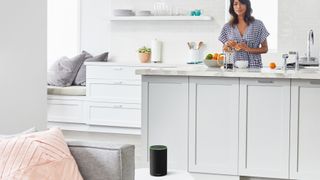
Of the two, the Amazon Echo Plus is the superior sounding device. While both offer Dolby-tuned internals for as rich a sound as their components can deliver, the Plus has the beefier drivers. It has a 3-inch woofer and 0.8-inch tweeter, while the regular Echo sticks with a 2.5-inch woofer and 0.6-inch tweeter.
That said, it’s not a huge difference between the two. The Echo Plus definitely feels more powerful – there’s a depth to its sound that the standard Echo can’t match – but it’s just a step or two above, not a radical difference. We’d personally opt for the Echo Plus in terms of audio, but if your budget doesn’t stretch that far, you shouldn’t feel too left out.
What do the Amazon Echo and Amazon Echo Plus cost?
Given the more robust feature set, it’s the Echo Plus which, unsurprisingly costs the most out of the pair. You can find the latest live prices for both below:
Is it worth the added expense? It’s arguable – both are broadly similar. The Echo Plus sounds better, but not massively so, though the convenience of being able to free your home from numerous different smart home device hubs is a worthy one.
Our gut leans towards the standard echo being more worthy of your money, with the Plus being a nice ‘deluxe’ upgrade if you’ve got some extra money to spend. It’s full of nice extras, but not necessarily ‘must-haves’. It's worth noting that both can often be found bundled with different compatible smart home devices, from doorbells to smart lightbulbs. Make sure to do the maths on any bundle deals you see – you might even make a saving overall with a Plus if its paired with something else you're after.
Taken in isolation though, both are fantastic devices, worthy of your cash. You can’t go far wrong whichever Amazon Echo device you opt for.
Gerald is Editor-in-Chief of iMore.com. Previously he was the Executive Editor for TechRadar, taking care of the site's home cinema, gaming, smart home, entertainment and audio output. He loves gaming, but don't expect him to play with you unless your console is hooked up to a 4K HDR screen and a 7.1 surround system. Before TechRadar, Gerald was Editor of Gizmodo UK. He is also the author of 'Get Technology: Upgrade Your Future', published by Aurum Press.
Most Popular

